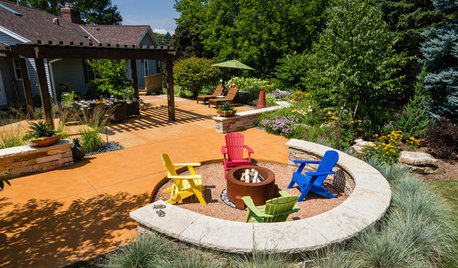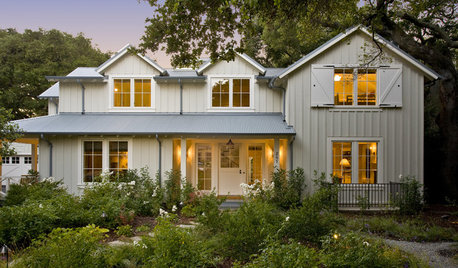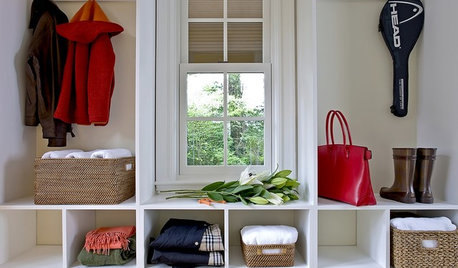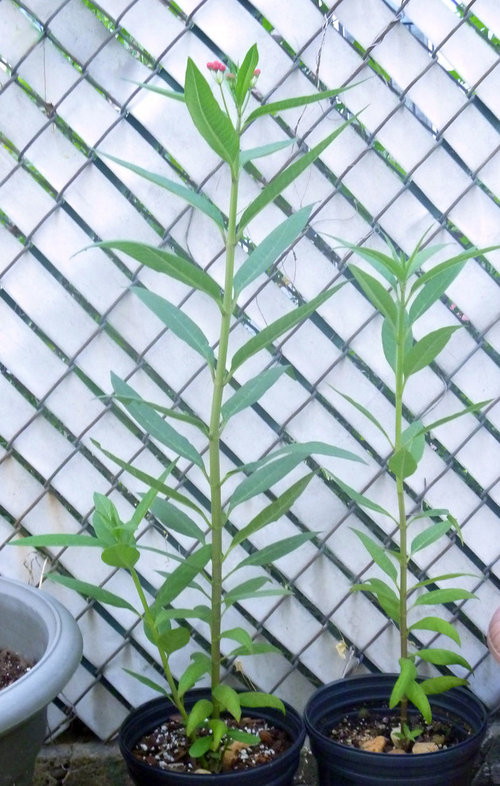First 5:1:1 experience for this newbie - faster and bigger growth
horti2791
8 years ago
last modified: 8 years ago
Featured Answer
Sort by:Oldest
Comments (13)
horti2791
8 years agoRelated Discussions
When , how and why - Al's 5:1:1!
Comments (36)Mcreader, let me put it this way. I live in north GA. Pine trees are grown commercially all over this state and I struggle to find pine bark the past few years! Mulches are now dyed or colored. Some of the pine bark I've used was toxic because the trees were likely injected and killed standing.. here I was making soil mixes that contained powerful herbicides. (that was truly a very bad mix!) The best source I found is to get Lowes or Home Depot to order the product with a purple label sold as 'pine bark mulch'. Some bags have a lot of good size bark bits and others have a lot of wood and cambium or are too decayed. It's really become a hassle to find a good bark bit. Our local Home Depot said I could prepay and they could order some bags of the product I like to use so you might want to ask and see if that's available. I've used aggregate suppliers, landscape suppliers and places like that who had huge stacks of bark but you have to be careful and sort the sizes. Its a far better price but if you're willing to go through the trouble its a fraction of the cost of pre bagged products. I made this video a few summers ago explaining and showing the product I've had the most luck with. Maybe it will be helpful 511 explained...See MoreRepotting into 5-1-1 soil. Questions about 511 materials.
Comments (5)I know this is VERY late - don't know if you will ever even see this posting at all - but for what its worth here goes. I am growing M. koenigii in fiber (fabric) pots. They have been in a mixture of either peat+bark (MM Soil pep in fact) + Growstone (GS2) or peat+bagged mix+GS2 Growstone when I couldn't get MM Soil Pep or anything like it any more. They were originally in a peat+bagged container mix when I started them from seed. It has been 3 years since they were potted up into the fiber plant bags and Growstone-based mix. Some were planted into a gritty-like mix - all of those have either been repotted into a Growstone mix where they are gamely struggling to catch up to their heartier brothers, or - they just flat out died. M. koenigii is a member of the citrus family, a cousin of the so-called "true" citrus such as lemons and oranges etc. I see no reason why what works for my M. koenigii wouldn't work for your citrus as well. You can get the Growstone from a hydroponics store. If they don't have it in stock, they should be able to order it for you. A 1.5 cu ft bag cost me around $35 the last time I bought one, a couple of years ago. That may seem steep at first but the stuff is easily recycled and reused, and it prevents compaction to the point where I've not had to repot for the entire 3 year period and will repot next spring only because most of the plants need to be potted up anyway. You want the middle size - GS2 - not the larger chunks nor the small gritty stuff sold for gnat control. Could be worth a try for you. Handing issues - it is dusty straight out of the bag, and since it is recycled glass, you don't want to breathe that dust. A 99c dust mask from Home Despot should be all you need. You need to rinse the dust off/out of it when you pop the bag open. Put it in a big tub of water and swish it around to de-dust it. If you're reusing/recycling - still put it in a big tub of water and swish it around - the spent organic matter will mostly fall to the bottom and you can just scoop the remaining Growstone into a bucket of bleach water to sterilize. I only sterilize when recycyling, don't see a need for it straight out of the bag. My initial mix proportions were 3:2:1 peat-bark-Growstone but that soon devolved to just mixing it all together until it "looked right". Especially after the MM Soil Pep wasn't available anymore and I was down to just peat and whatever bagged container mix I could find and afford that didn't have any sand in it and at least LOOKED like it had a fair amount of bark in it. It doesn't seem to have mattered, all my curry leaf trees that were initially planted into a Growstone mix at the same time (about 3 years ago) are roughly the same size and robustness. There may be issues of pH but if so, under my local conditions, it doesn't seem to have mattered. Plus all that peat moss is pretty acidic. But then my local water is pretty alkaline at about 9. At any rate it is working for me....See MoreRoots everywhere. Can 5-1-1 mix easily be reused in a 2nd season?
Comments (3)Hi acg85, It would be far more trouble than it's worth to separate the soil from the old root mass. Not to mention; depending on how dried out it might be, the soil can get very hydrophobic, therefore extremely difficult to re-wet. Much easier to start fresh. Rob...See MoreMuddy 5-1-1
Comments (29)Yup, looks like re pot should be in full swing with a much fresher mix. It still not too late. I would make sure that when you do make your mix, use peat moss. If not peat moss the 'turface' like Vance and I do...If you use 'soil' of any kind, it will slide past all your bark and sit into the bottom of your containers clogging everything up and your perched water along with rot will be where all the soil settled.. The reason why you should wet your mix before you use it is so that the peat or 'turface' will adhere to the bark and stay that way even if you should water over and over again. It will not fall to the bottom while just the bark stays near the surface which is a mistake many make. Also too, make sure your bark sizes are very small, sift the through a 1/2 screen to allow only the small pieces to fall through. If you are using decomposed pine bark like I use, I still do the same....See Moretapla (mid-Michigan, USDA z5b-6a)
8 years agojane__ny
8 years agohorti2791
8 years agogaryfla_gw
8 years agohalocline
8 years agolast modified: 8 years agotapla (mid-Michigan, USDA z5b-6a)
8 years agohalocline
8 years agotropicofcancer (6b SW-PA)
8 years agohalocline
8 years agojane__ny
8 years agogaryfla_gw
8 years ago
Related Stories

SELLING YOUR HOUSEHelp for Selling Your Home Faster — and Maybe for More
Prep your home properly before you put it on the market. Learn what tasks are worth the money and the best pros for the jobs
Full Story
SELLING YOUR HOUSESave Money on Home Staging and Still Sell Faster
Spend only where it matters on home staging to keep money in your pocket and buyers lined up
Full Story
DECORATING GUIDES7 Tips to Sell Your Home Faster to a Younger Buyer
Draw today's home buyers by appealing to their tastes, with these guidelines from an expert decorator
Full Story
REMODELING GUIDESNew Home Renovation Study Paints Positive Growth Picture
More than two-thirds of industry professionals say 2014 was a good year and 2015 is looking hopeful
Full Story
SELLING YOUR HOUSEYour Home-Selling Guide for a Faster and Better Sale
Learn staging and curb appeal tricks, how to get the best photos and more in this roundup focusing on high-impact house-selling strategies
Full Story
LIFE11 Ways to Get Out the Door Faster
Make the morning routine less of a hassle with some simple organizing and planning around the house
Full Story
LIFEThe Good House: An Experience to Remember
A home that enriches us is more than something we own. It invites meaningful experiences and connections
Full Story
GARDENING GUIDESLearn the Secret to Bigger and Better Roses
Grow beautiful roses using both ordinary and unusual soil amendments
Full Story
BEDROOMS7 Ways to Make a Small Bedroom Look Bigger and Work Better
Max out on comfort and function in a mini space with built-ins, wall mounts and decorating tricks that fool the eye
Full Story
DECORATING GUIDES5 Ways to Make Your First Home Amazing
Design prodigy Kyle Schuneman scatters rules to the wind and shares his tips for making a first apartment or house stylishly memorable
Full Story





tapla (mid-Michigan, USDA z5b-6a)